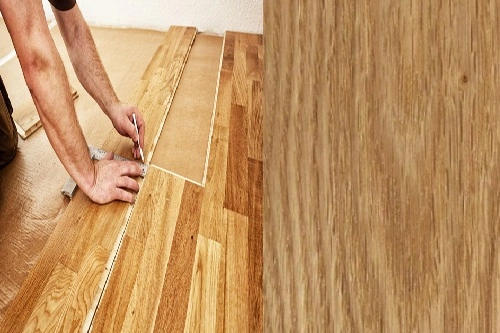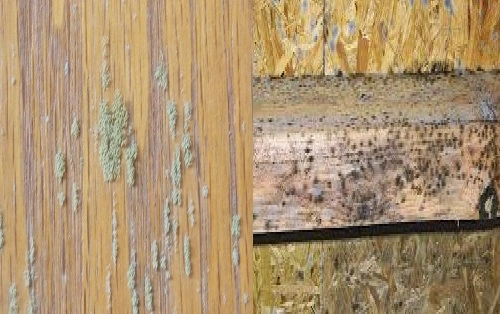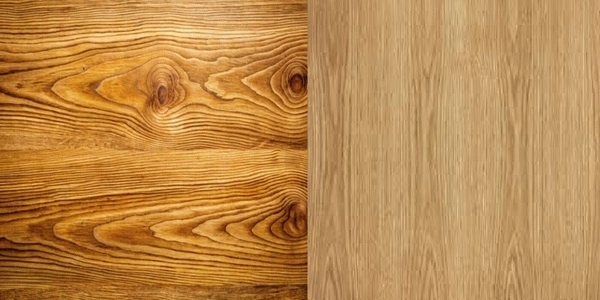Choosing the right flooring for your home is an essential decision that affects the appearance, durability, and value of your space. Two popular options in the USA are engineered wood flooring and laminate flooring. While both are versatile and budget-friendly alternatives to solid hardwood, they differ significantly in composition, performance, maintenance, and overall value.
In this article, we’ll compare engineered wood flooring and laminate flooring to help you decide which one suits your style, budget, and lifestyle needs.
What is Engineered Wood Flooring?
Engineered wood flooring consists of a real hardwood veneer layer on top of a core made of plywood, high-density fiberboard (HDF), or other materials. It combines the natural beauty of hardwood with enhanced stability, making it a practical choice for modern homes.
Key Features of Engineered Wood Flooring:
- Real Hardwood Surface: The top layer is genuine wood, giving it an authentic look and feel.
- Multi-Layer Construction: Layers of plywood or HDF provide stability and reduce warping.
- Thickness: Engineered wood planks typically range between 3/8” and 3/4” thick.
- Installation Options: Can be glued, stapled, or floated over different subfloors.
What is Laminate Flooring?
Laminate flooring is a synthetic product composed of multiple layers. It typically includes a fiberboard core topped with a high-resolution image of wood, stone, or tile, and a clear protective wear layer.
Key Features of Laminate Flooring:
- Image Layer: A photo-realistic layer mimics the appearance of wood or other materials.
- Wear Layer: A tough, transparent coating provides protection against scratches, stains, and wear.
- Thickness: Typically ranges between 6mm and 12mm.
- Easy Installation: Most laminate floors use a click-lock system for quick, DIY-friendly installation.
Engineered Wood vs. Laminate: Key Differences
| Feature | Engineered Wood Flooring | Laminate Flooring |
|---|---|---|
| Material Composition | Real hardwood veneer over plywood/HDF | Synthetic layers with fiberboard core |
| Appearance | Natural wood grain; authentic look | Photo-realistic wood-look image |
| Durability | Highly durable; real wood surface | Durable wear layer; scratch-resistant |
| Moisture Resistance | Moderate; better than solid hardwood | High; resists water and spills |
| Maintenance | Requires regular cleaning and oiling | Low maintenance; easy to clean |
| Installation | Glue, nail, or floating options | Floating click-lock system (DIY) |
| Refinishing | Can be sanded/refinished (1-2 times) | Cannot be refinished |
| Cost | More expensive due to real wood | More affordable; budget-friendly |
| Lifespan | 20-40 years with proper care | 10-20 years, depending on quality |
| Resale Value | Adds value as real wood flooring | Limited impact on home value |
1. Appearance and Aesthetic Appeal
- Engineered Wood Flooring:
Engineered wood offers the authentic look and feel of natural hardwood because of its real wood veneer. The top layer displays natural wood grains, knots, and textures, creating a warm and elegant aesthetic. Since it’s made from real wood, no two planks are exactly alike, adding character to your flooring. - Laminate Flooring:
Laminate flooring uses high-resolution images to mimic the appearance of wood, stone, or tile. While modern laminate technology has improved dramatically, making it look realistic, it still lacks the depth, feel, and variation of real wood. For those on a budget, laminate provides an attractive wood-look alternative.
Winner: Engineered Wood
For authenticity and timeless beauty, engineered wood flooring comes out ahead.
2. Durability and Scratch Resistance
- Engineered Wood Flooring:
Engineered wood is durable and can withstand moderate wear and tear, but because of its real wood surface, it is more susceptible to scratches, dents, and water damage than laminate. However, its thickness allows for occasional refinishing, which can extend its lifespan. - Laminate Flooring:
Laminate is extremely durable, with a tough wear layer that protects against scratches, stains, and everyday wear. It is an excellent option for homes with pets, kids, or heavy foot traffic. However, once damaged, laminate cannot be refinished.
Winner: Laminate Flooring
If scratch resistance and durability are top priorities, laminate flooring is the better choice.
3. Moisture Resistance
- Engineered Wood Flooring:
While engineered wood is more moisture-resistant than solid hardwood due to its layered construction, prolonged exposure to water can still cause swelling or warping. It’s best suited for living rooms, bedrooms, and hallways, rather than bathrooms or basements. - Laminate Flooring:
Laminate flooring offers superior water resistance, especially newer waterproof options. Its wear layer and core are designed to repel water, making it ideal for kitchens, bathrooms, basements, and other moisture-prone areas.
Winner: Laminate Flooring
For areas with high humidity or risk of spills, laminate outperforms engineered wood.
4. Installation
- Engineered Wood Flooring:
Engineered wood can be installed in multiple ways—glued, stapled, or floated. While it offers versatility, professional installation is often recommended, which can increase costs. - Laminate Flooring:
Laminate flooring uses a click-lock system that is perfect for DIY installations. It requires no glue or nails and can be installed quickly over almost any subfloor.
Winner: Laminate Flooring
For ease of installation, laminate flooring is the clear choice, especially for DIY enthusiasts.
5. Maintenance and Cleaning
- Engineered Wood Flooring:
Engineered wood requires regular sweeping and cleaning with products designed for wood. It also benefits from periodic oiling or refinishing to maintain its appearance. - Laminate Flooring:
Laminate is low-maintenance and easy to clean. Regular sweeping, vacuuming, and occasional mopping with a damp cloth keep it looking great. No special products or treatments are required.
Winner: Laminate Flooring
Laminate’s ease of cleaning and low maintenance make it ideal for busy households.
6. Cost and Value
- Engineered Wood Flooring:
Engineered wood is more expensive than laminate due to its real wood veneer. However, it adds value to your home, making it a worthwhile investment for long-term homeowners. - Laminate Flooring:
Laminate is budget-friendly, with prices significantly lower than engineered wood. While it doesn’t increase resale value as much, it’s a cost-effective option for short-term solutions or rental properties.
Winner: Depends on Budget
- For value and longevity, choose engineered wood.
- For affordability, choose laminate.
Final Verdict
- Choose Engineered Wood Flooring If:
- You want the authentic beauty and feel of real wood.
- Resale value and long-term investment are important.
- You’re looking for a durable option with the potential for refinishing.
- Choose Laminate Flooring If:
- You need an affordable, durable, and water-resistant solution.
- Low maintenance and DIY installation are priorities.
- You’re outfitting a high-traffic or moisture-prone area.
Both options have their place in modern homes. Engineered wood brings elegance and long-term value, while laminate offers practicality, affordability, and resilience. By weighing your needs, budget, and lifestyle, you can confidently choose the perfect flooring for your space.


